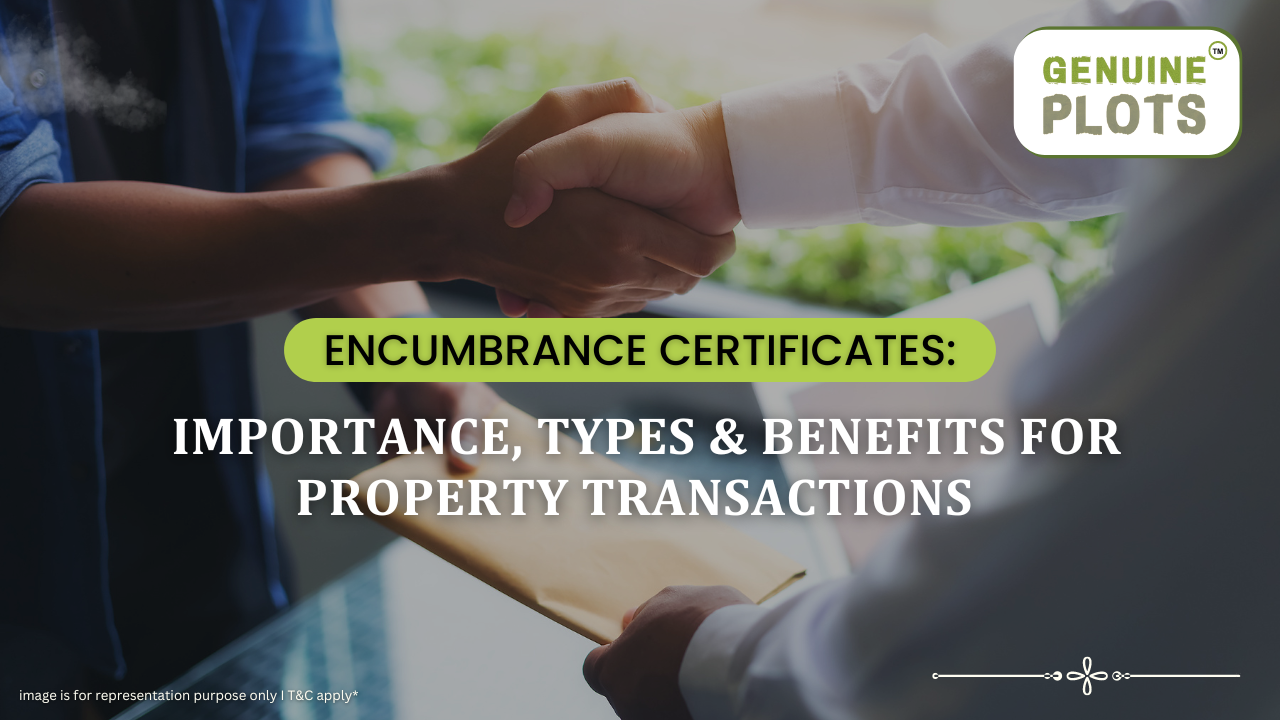Prev Post
Advantages of Investing in Plots in 2024Encumbrance Certificates: Importance, Types, and Benefits for Property Transactions
An Encumbrance Certificate (EC) is an important document that proves a property is free from any legal or financial problems. This certificate is issued by the Department of Registration and Stamping in the state or union territory where the property is located. It is needed when you are registering ownership, selling, or transferring property. The EC is also required by banks when you apply for a home loan or a loan against your property.
What Does the Encumbrance Certificate Show?
The Encumbrance Certificate gives a history of the property, showing who owns it and listing all transactions related to it. This can include sales, purchases, loans, leases, and other changes in ownership, like inheritance. The EC can go back as far as 30 years and also include information about any legal disputes or fraud related to the property.
Why is the Encumbrance Certificate Important?
- Proof of Ownership
- The EC is a key document that proves who owns the property. If you want to buy land or a property, the EC helps ensure that no one else can claim it later. It confirms that the property is legally yours.
- Tax Records
- If property taxes haven’t been paid for more than three years, the EC is used to update the tax records with the local Panchayat or Village administrator. This keeps the property tax information accurate.
- Loan Applications
- When you apply for a loan using your property as collateral, the bank will ask for an EC. The certificate shows that the property has no legal issues, making it easier for the bank to approve the loan.
- Property Mutation
- After buying a property, you need to update the ownership records with the local municipal corporation. This process, called mutation, requires an EC to confirm the transfer of ownership.


Types of Encumbrance Certificates
There are two types of Encumbrance Certificates, which are issued by the sub-registrar office (SRO):
- Form 15:
- This form is issued when the property has had transactions like sales, purchases, loans, leases, gifts, or inheritance. It shows that the property has been involved in these transactions.
- Form 16:
• This is issued when there have been no transactions recorded for the property during the period the certificate covers. It is also known as a “nil-encumbrance certificate,” meaning there are no encumbrances (issues) on the property.







